Abstract
Most analyses of species selection require emergent, as opposed to aggregate, characters at the species level. This "emergent character" approach tends to focus on the search for adaptations at the species level. Such an approach seems to banish the most potent evolutionary property of populations--variability itself--from arguments about species selection (for variation is an aggregate character). We wish, instead, to extend the legitimate domain of species selection to aggregate characters. This extension of selection theory to the species level will concentrate, instead, on the relation between fitness and the species character, whether aggregate or emergent. Examination of the role of genetic variability in the long-term evolution of clades illustrates the cogency of broadening the definition of species selection to include aggregate characters. We reinterpret, in this light, a classic case presented in support of species selection. As originally presented, the species selection explanation of volutid neogastropod evolution was vulnerable to a counterinterpretation at the organism level. Once this case is recast within a definition of species selection that reflects the essential structure and broad applicability of hierarchical selection models, the organism-level reinterpretation of variability loses its force. We conclude that species selection on variability is a major force of macroevolution.
Full text
PDF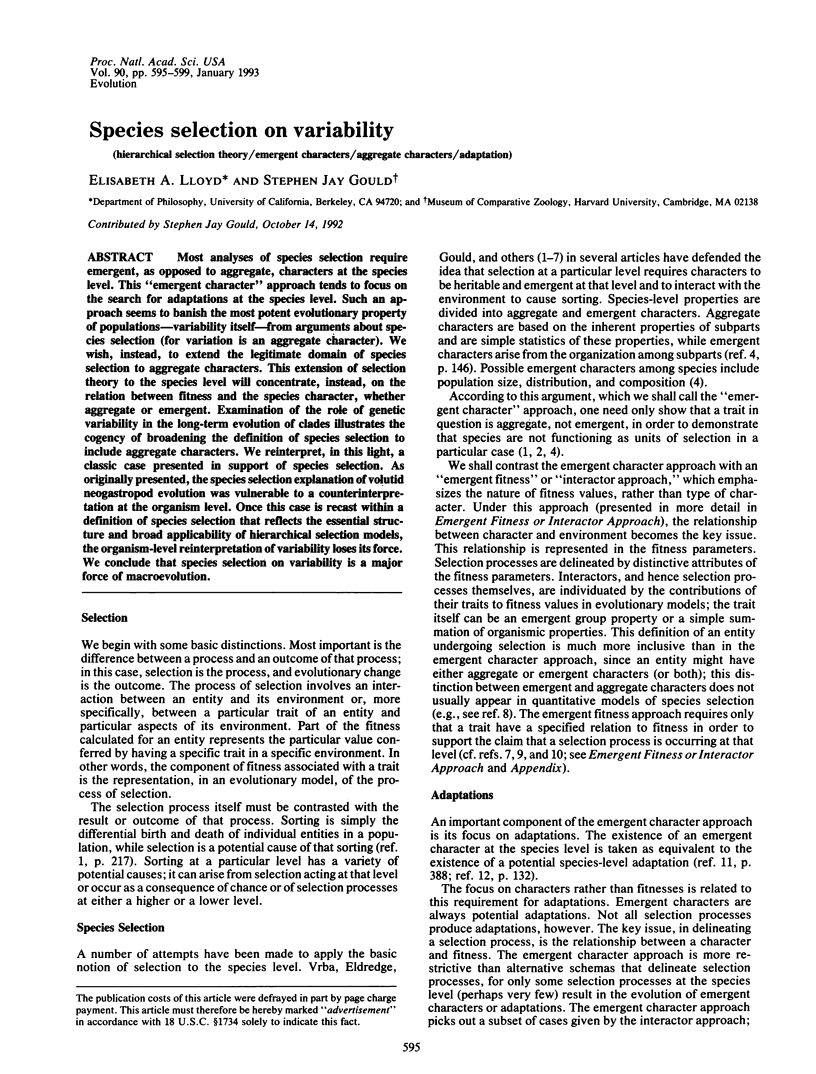
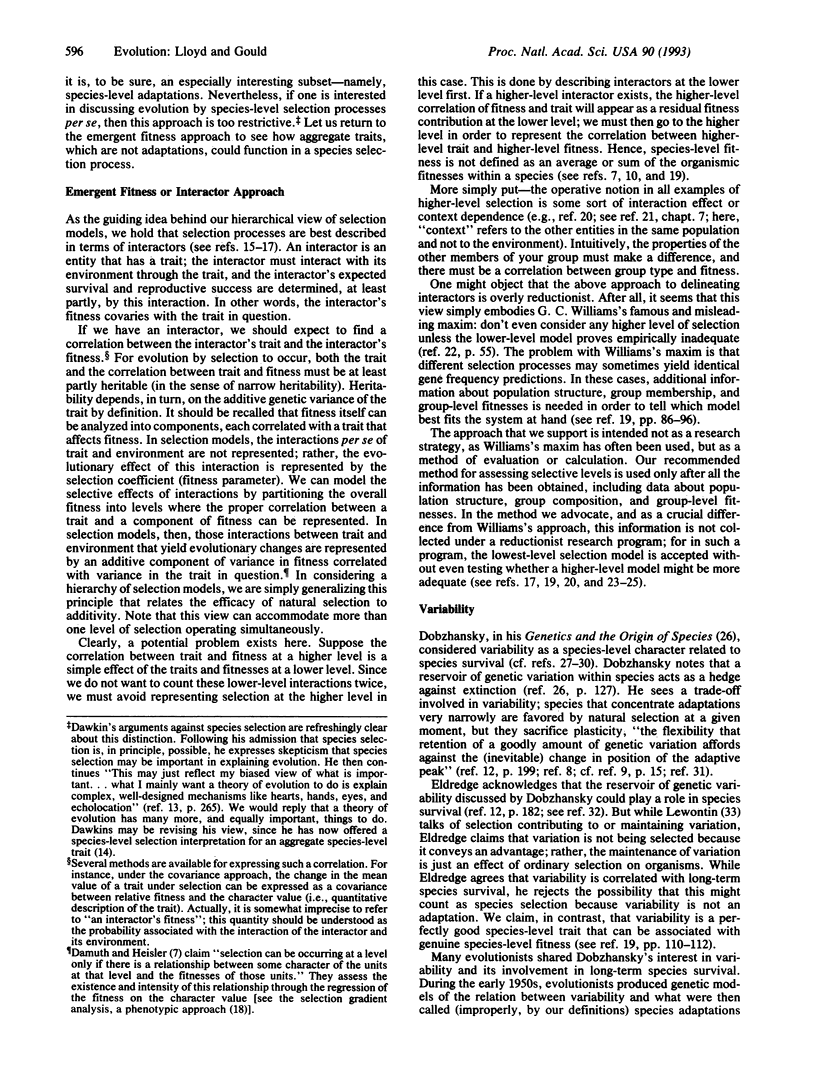
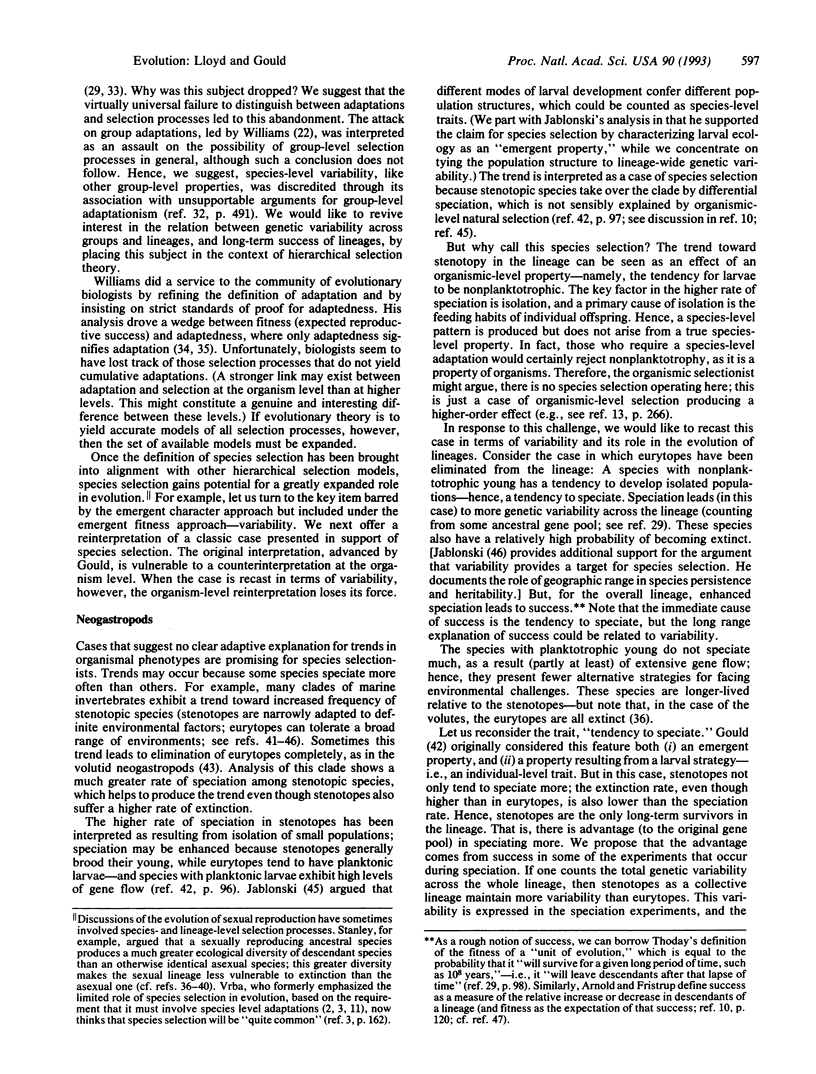
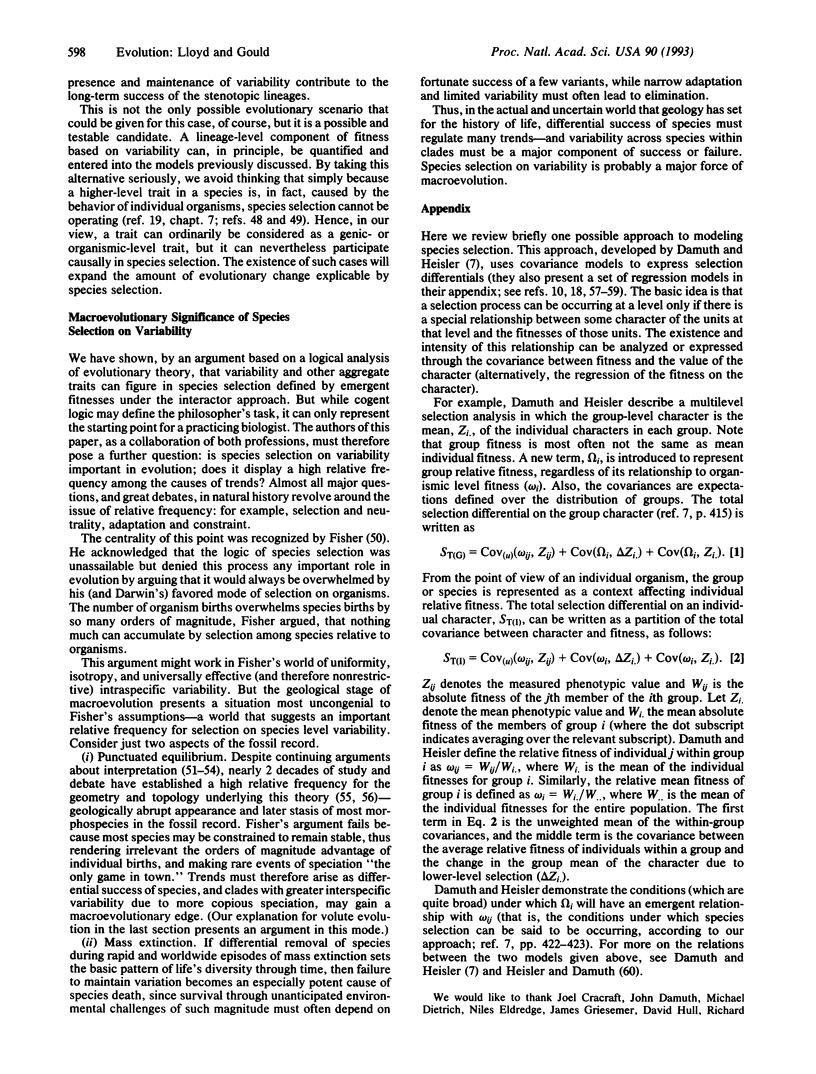
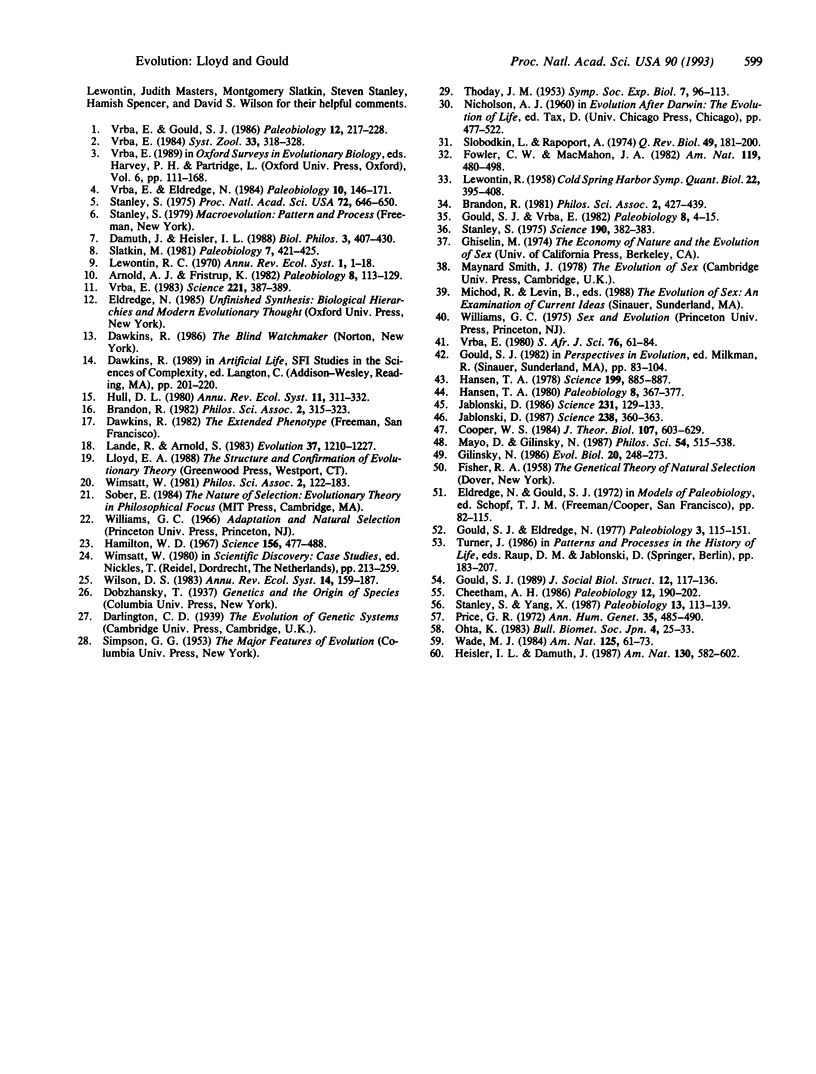
Selected References
These references are in PubMed. This may not be the complete list of references from this article.
- Hamilton W. D. Extraordinary sex ratios. A sex-ratio theory for sex linkage and inbreeding has new implications in cytogenetics and entomology. Science. 1967 Apr 28;156(3774):477–488. doi: 10.1126/science.156.3774.477. [DOI] [PubMed] [Google Scholar]
- Hansen T. A. Larval dispersal and species longevity in lower tertiary gastropods. Science. 1978 Feb 24;199(4331):885–887. doi: 10.1126/science.199.4331.885. [DOI] [PubMed] [Google Scholar]
- Jablonski D. Background and mass extinctions: the alternation of macroevolutionary regimes. Science. 1986 Jan 10;231(4734):129–133. doi: 10.1126/science.231.4734.129. [DOI] [PubMed] [Google Scholar]
- Jablonski D. Heritability at the species level: analysis of geographic ranges of cretaceous mollusks. Science. 1987 Oct 16;238(4825):360–363. doi: 10.1126/science.238.4825.360. [DOI] [PubMed] [Google Scholar]
- LEWONTIN R. C. The adaptations of populations to varying environments. Cold Spring Harb Symp Quant Biol. 1957;22:395–408. doi: 10.1101/sqb.1957.022.01.037. [DOI] [PubMed] [Google Scholar]
- Price G. R. Extension of covariance selection mathematics. Ann Hum Genet. 1972 Apr;35(4):485–490. doi: 10.1111/j.1469-1809.1957.tb01874.x. [DOI] [PubMed] [Google Scholar]
- Slobodkin L. B., Rapoport A. An optimal strategy of evolution. Q Rev Biol. 1974 Sep;49(3):181–200. doi: 10.1086/408082. [DOI] [PubMed] [Google Scholar]
- Stanley S. M. A theory of evolution above the species level. Proc Natl Acad Sci U S A. 1975 Feb;72(2):646–650. doi: 10.1073/pnas.72.2.646. [DOI] [PMC free article] [PubMed] [Google Scholar]
- Stanley S. M. Clades versus clones in evolution: why we have sex. Science. 1975 Oct 24;190(4212):382–383. doi: 10.1126/science.1179215. [DOI] [PubMed] [Google Scholar]
- Vrba E. S. Macroevolutionary trends: new perspectives on the roles of adaptation and incidental effect. Science. 1983 Jul 22;221(4608):387–389. doi: 10.1126/science.221.4608.387. [DOI] [PubMed] [Google Scholar]


